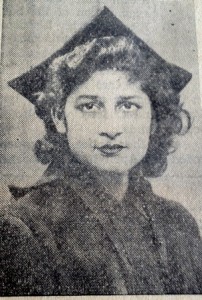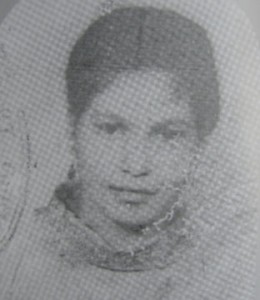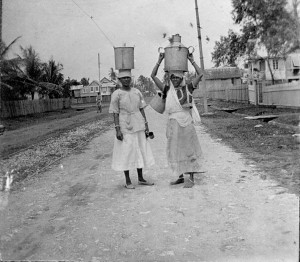East Indian women cast off plantation tradition

The first arrivals in 1838 on the sailing ships, Hesperus and Whitby, numbered 396, of whom only 22 were women. They lived in logies with poor sanitary conditions throughout the indenture period. Children and young women worked on sugar plantations in the ‘weeding gang’ and later in the ‘task gang’ or ‘creole gang’, earning poor wages.
In the late 1940s, women would leave their babies at the Estate crèche and go to work in the fields. They would also carry their babies in the fields, until an older child was able to stay home and look after the younger sibling.
The role of women such as ‘Sita’ of the Ramayana and ‘Radha’ of the Mahabarata were portrayed as the pure and ideal wife, and these representations continued to influence gender relationship expectations between men and women (at least among the Hindus).
Women who resisted or were accused of violating the oppressive patriarchal structures within Indian family structure were abused or even murdered. Among the women killed in this early period were “Anundai, Baumee, Goirapa and Saukalia, for allegedly deserting their husbands.”
Although the gross disparity of women created the conditions for sexual exploitation, it also served to strengthen their resistance movements throughout the indenture period.
Resisting plantation mistreatment
Sugar planters imposed harsh working conditions on labourers so that many strikes (riots) occurred. Labour unrests were often because of workers’ protests against mistreatment of estate workers, especially since the first riots on estates broke out in 1869.
Women also participated in protests against planters’ mistreatment of workers on sugar estates. In 1903, at Plantation Friends in Berbice an indentured woman, Salamea, urged Indians to fight against the plight of indentureship. Moreover, after indenture ended in 1917, while Indian women continued to protest as they struggled for justice, they also became victims of the planters’ oppressive practices on the sugar estates.
In 1964, Kowsilla, at age 44 and mother of 4, was “mowed down by a tractor [at Leonora sugar estate]. She became another martyr of the Guyanese working people movement.” Her death on May 6 is remembered for a woman who stood up bravely against a system of exploitation and oppression as during 1964 especially, many suffered during the sugar workers’ strike. Few such experiences and forms of resistance were recorded against planter oppression.
Helping to provide for the family

While many Indian women, especially among the working poor, had not attended school, they were working to maintain their families and to send their children to school. Thus these women contributed significantly to their household and community, especially as ‘financial managers’, developing ways to improve their economic position. These included planting their backyard with greens, raising chickens, goats, sheep, looking after their cows, selling milk, and buying and selling produce.
Some also managed little shops in the villages and assisted in their husbands’ businesses, such as the tailor shops and grocery shops.
In the early 1930s and 1940s, Indian women preserved domestic life by participating in ‘throwing box hands’ to save money for their children’s education or marriage and, in some cases, they would ‘pawn’ their jewellery to obtain sufficient funds. In spite of the tremendous responsibilities they had to shoulder, their strength sustained the home greatly. Without birth control, many Indian women had large families, some having between 6 to 10 children or more, and therefore had to find ways to increase the family income to support a large family.
Urban women make their voices heard
At the same time, a small group of middle-class Indian women in the urban areas were beginning to participate in public circles.
Esther Saywack Mahadeo
One of the first known women to demonstrate resistance against the injustices of colonialism was Esther Saywack Mahadeo, (born in 1872) who was widowed at the age of 28, with four children.
Having inherited a small shop, she refused her parents’ offer to return home.





Comments are closed.